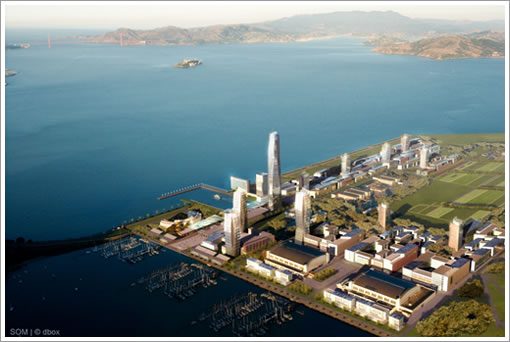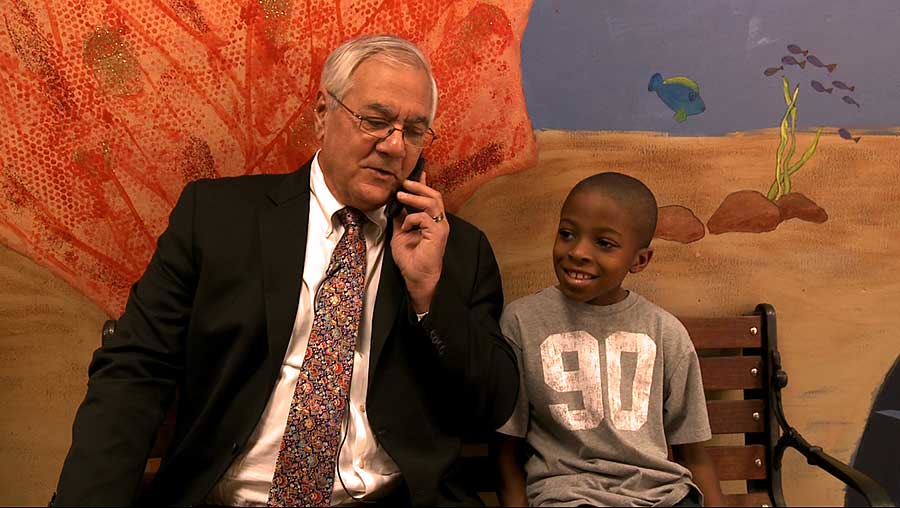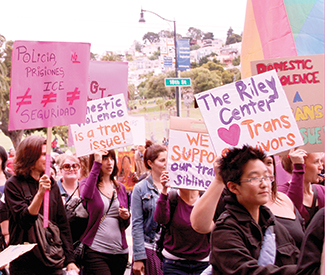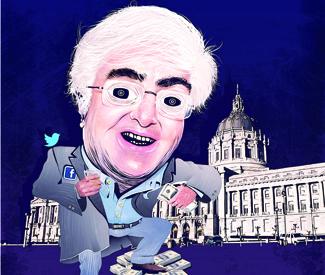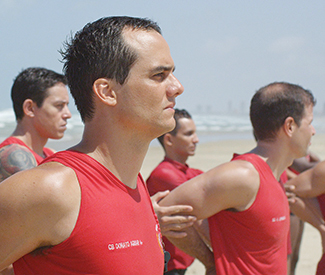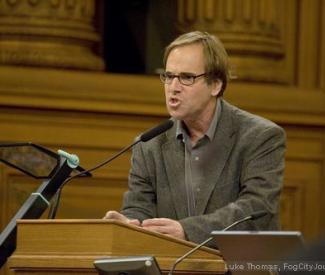Stage listings are compiled by Guardian staff. Performance times may change; call venues to confirm. Reviewers are Robert Avila, Rita Felciano, and Nicole Gluckstern. Submit items for the listings at listings@sfbg.com.
THEATER
OPENING
Into the Woods San Francisco Playhouse, 450 Post, SF; www.sfplayhouse.org. $20-120. Previews June 24-27, 8pm. Opens June 28, 8pm. Runs Tue-Thu, 7pm; Fri-Sat, 8pm (also Sat, 3pm); Sun, 2pm. Through Sept 6. SF Playhouse performs Stephen Sondheim’s fractured fairy-tale musical.
BAY AREA
Pygmalion 1220 Pear, Mtn View, www.thepear.org. $10-35. Previews Thu/19, 8pm. Opens Fri/20, 8pm. Runs Thu-Sat, 8pm; Sun, 2pm. Through July 13. Pear Avenue Theatre presents the George Bernard Shaw classic.
ONGOING
“The Bakla Show 3” Bindlestiff Studio, 185 Sixth St, SF; http://baklashow3.bpt.me. $10-20. Thu-Sat, 8pm. Through June 28. Three short works focusing on the struggles of Pinoy LGBT youth.
Body of Water Southside Theater, Fort Mason Center, Bldg D, Third Flr, Marina at Laguna, SF; www.brownpapertickets.com. $15-35. Fri-Sat, 7:30pm; Sun, 2:30pm. Through June 28. A Theatre Near U presents an original indie-rock teen musical, with songs by Jim Walker.
Brahmin/I: A One-Hijra Stand-Up Comedy Show Thick House, 1695 18th St, SF; www.crowdedfire.org. $15-35. Wed-Sat, 8pm. Through June 28. Stand-up comedy at its best is a stage for telling more than jokes. It’s a place for telling the truth fearlessly. Depending on the comic, that “truth” may be reactionary — trading on sexual stereotypes, for example, in a way that reinforces a patriarchal worldview. In other cases, the comedian’s truth might be radically subversive of the usual order of things. This latter sort of truth telling should also describe the theater at its best (if in practice it too rarely does). Crowded Fire’s production of Aditi Brennan Kapil’s wonderfully layered and rambunctious Brahman/I: A One-Hijra Stand-Up Comedy Show joins both spheres in a persuasive mash-up of truths personal, political, mythical, and artistic. It unfolds as an often simultaneously awkward, stirring, and very funny stand-up routine by an amped Indian American intersex person with the name of the Hindu god who created the universe — and who is, at one level, the playwright’s transposition of that god to a contemporary American setting. Played by the ferociously charming and utterly compelling New York-based actor Imran Sheikh (under Erin Merritt’s intelligent direction), Brahman/Brahmani pursues comedy as a means of expressing what otherwise will not be accepted or understood, namely the experience of gender fluidity beyond the brutal boundaries of the standard masculine/feminine binary. A little like an updated Hedwig and the Angry Inch, Kapil’s “performance” of the intersex self also has a colonial dimension that shrewdly folds in other hierarchies of power and privilege — including the comedian’s domineering attitude toward taciturn bass player and sidekick J (an aptly tranquil Mackenszie Drae) — while mining Hindu cosmology for rich analogues and ironies. (Avila)
Devil Boys From Beyond New Conservatory Theatre Center, 25 Van Ness, SF; www.nctcsf.org. $25-45. Wed-Sat, 8pm; Sun, 2pm. Through June 28. New Conservatory Theatre Center performs Buddy Thomas and Kenneth Elliot’s campy sci-fi saga.
Each and Every Thing Marsh San Francisco Main Stage, 1062 Valencia, SF; www.themarsh.org. $20-50. Thu-Fri, 8pm; Sat, 8:30pm. Through July 12. The latest solo show from celebrated writer-performer Dan Hoyle (Tings Dey Happen,The Real Americans) winds a more random course than usual across the country and abroad but then that’s the idea — or at least Hoyle warns us, right after an opening encounter with a touchy young white supremacist, that the trip he’s taking us on is a subtle one. Displaying again his exceptional gifts as a writer and protean performer, Hoyle deftly embodies a set of real-life encounters as a means of exploring the primacy and predicament of face-to-face communication in the age of Facebook. With the help of director Charlie Varon (who co-developed the piece with Hoyle and Maureen Towey), this comes across in an entertaining and swift-flowing 75-minute act that includes a witty rap about “phone zombies” and a Dylan-esque screed at a digital detox center. But the purported subject of connection, or lack there of, in our gadget-bound and atomized society is neither very original nor very deeply explored — nor is it necessarily very provocative in a theater, before an audience already primed for the live encounter. Far more interesting and central here is Hoyle’s relationship with his old college buddy Pratim, an Indian American in post-9/11 America whose words are filled with laid-back wisdom and wry humor. Also intriguing is the passing glimpse of early family life in the Hoyle household with Dan’s celebrated artist father, and working-class socialist, Geoff Hoyle. These relationships, rather than the sketches of strangers (albeit very graceful ones), seem the worthier subjects to mine for truth and meaning. Indeed, there’s a line spoken by Pratim that could sum up the essence of Hoyle’s particular art: “It’s so much better,” he says, “when you find yourself in other people than when you just find yourself.” Hoyle’s real frontier could end up being much more personal terrain, much closer to home. (Avila)
Feisty Old Jew Marsh San Francisco Main Stage, 1062 Valencia, SF; www.themarsh.org. $25-100. Sat-Sun, 5pm. Extended through July 13. Charlie Varon performs his latest solo show, a fictional comedy about “a 20th century man living in a 21st century city.”
Foodies! The Musical Shelton Theater, 533 Sutter, SF; www.foodiesthemusical.com. $32-34. Fri-Sat, 8pm. Open-ended. AWAT Productions presents Morris Bobrow’s musical comedy revue all about food.
God Fights the Plague Marsh San Francisco Studio Theater, 1062 Valencia, SF; www.themarsh.org. $15-100. Opens Sat/21, 8:30pm. Runs Sat, 8:30pm; Sun, 7pm. Through Aug 10. The Marsh presents a solo show written by and starring 18-year-old theater phenom Dezi Gallegos.
The Homosexuals New Conservatory Theatre Center, Decker Theatre, 25 Van Ness, SF; www.nctcsf.org. $25-45. Wed-Sat, 8pm; Sun, 2pm. Through June 28. This mildly intriguing and fitfully engaging drama from rising Chicago playwright Philip Dawkins (whose Failure: A Love Story is currently having its Bay Area debut at Marin Theater Company) explores the tensions — sexual, generational, and otherwise — among a small circle of mostly gay friends via a central figure, Evan (a sharp Robert Rushin), who ends up in relationships with almost everyone. Beginning in 2010, as 29-year-old Evan breaks up with older histrionic theater director Peter (a drolly world-weary Matt Weimer), each successive scene jumps back two years and one relationship, until the final scene unites the entire circle as they welcome naïve Iowa teen Evan out of the closest and to the big city. It’s also a new millennium, of course, some distance now from Stonewall and the first wave of the AIDS crisis, and one of the more interesting aspects of the drama (which benefits from an overall strong cast under the direction of Arturo Catricala) is the generational divide between Evan and his circle. This divide feels downright political in the aggressive showdown between Evan and the apathetic art teacher and predatory libertine Mark (a persuasive Keith Marshall), but there’s a political edge at the outset, in Evan’s pointed refusal to join Peter in referring to himself as a “homosexual,” insisting instead on the word “gay” tout court. Despite this underlying issue and some witty dialogue, however, there’s little of interest in most of the dynamics between Evan and his circle. The play’s structure accordingly becomes a slightly tedious countdown, at least until the final scene, which cashes in on the power of hindsight to produce a limited, wistful tremor of reflection. (Avila)
In the Tree of Smoke Great Star Theater, 636 Jackson, SF; www.brownpapertickets.com. $25. Thu-Sat, 8pm. Through June 28. Circus Automatic performs an new evening of immersive, experimental circus.
Macbeth Fort Point (beneath the Golden Gate Bridge), SF; www.weplayers.org. $30-75. Thu-Sun, 7pm. Through June 29. We Players’ latest site-specific undertaking is nothing less than the Scottish play at San Francisco’s historic Civil War-era Fort Point, under the southern base of the Golden Gate Bridge. And a better location for Shakespeare’s brooding, bloody, and spooky civil war drama is hard to imagine. The grandeur of the multistory red-brick edifice with its mammoth steel doors, magnificent inner courtyard, graceful arches, spiral stairwells, mysterious passageways, cannon casemates looking onto the Pacific — as well as old cannons and cannonballs — add up to a deeply atmospheric setting. Moreover, directors Ava Roy and John Hadden and their production team make good use of it, moving the audience around the grounds for the better part of three hours amid picturesque staging of scenes, a wonderfully powerful quartet of musicians (made up of percussionist Brent Elberg, trumpeter Aaron Priskorn, saxophonist Charlie Gurke, and trombonist Mara Fox alternating with Rick Brown), and reverberant cries from the weird sisters (Julie Douglas, Maria Leigh, Caroline Parsons), the enraged MacDuff (Dixon Phillips), or usurper Macbeth’s hapless victims. As the titular hero-villain, John Hadden is generally imposing if not always convincing, while Ava Roy’s forceful Lady M cuts an elegant, at times ethereal figure in her magnificent black gown (the admirable costumes throughout are by Julia Rose Meeks and Master Seamstress Dana Taylor). In general, the acting proves the weakest link, but the overall spectacle makes this a unique and rather compelling outing. (Avila)
The Orphan of Zhao ACT’s Geary Theater, 415 Geary, SF; www.act-sf.org. $20-120. Wed-Sat and Tue/24, 8pm (also Wed and Sat, 2pm). Through June 29. A ruthlessly ambitious general (Stan Egi) secures his hold on the emperor (Paolo Montalban) and ensures his own supremacy by orchestrating a coup in which an honorable rival (Nick Gabriel) is murdered along with his entire clan — or almost. His wife (Marie-France Arcilla), the daughter of the emperor, gives birth a short time later to his son, the orphan of the title, who as a young man (played by Daisuke Tsuji) is destined to avenge his father and family. But this proceeds by a circuitous and unexpected set of events, all of which hangs on the incredible self-sacrifice of a poor country doctor (Tony-winning star of M. Butterfly BD Wong) and his wife (Julyana Soelistyo) in alliance with an exiled nobleman (Sab Shimono). To say more would be to give too much away, but suffice to say poet James Fenton’s 2012 adaptation for the Royal Shakespeare Company of this famous and enduringly popular 13th-century Chinese play about loyalty, sacrifice, and revenge (based on an even more ancient legend) brims with life in American Conservatory Theater’s coproduction with La Jolla Playhouse. A fine cast, palpable characters, wonderfully stylized movement (courtesy of ACT’s Stephen Buescher), exquisite design (including a multi-tiered bamboo scaffold set by Daniel Ostling, expansive lighting by Lap Chi Chu, and sumptuous costuming by Linda Cho), and choice musical passages by composer and musical director Byron Au Yong add up to a potent theatrical vision, blending Eastern and Western sensibilities, under clever and insightful direction by ACT’s Carey Perloff. (Avila)
Pearls Over Shanghai Hypnodrome Theatre, 575 10th St, SF; www.thrillpeddlers.com. $30-35. Thu-Sat, 8pm. Extended through June 28. Five years ago, Thrillpeddlers breathed new life into a glitter-dusted piece of Sixties flotsam, beautifully reimagining the Cockettes’ raunchy mock-operetta Pearls Over Shanghai (in collaboration with several surviving members of San Francisco’s storied acid-drag troupe) and running it for a whopping 22 months. Written by Cockette Link Martin as a carefree interpretation of a 1926 Broadway play, the baldly stereotyped Shanghai Gesture, it was the perfectly lurid vehicle for irreverence in all directions. It’s back in this revival, once again helmed by artistic director Russell Blackwood with musical direction by Cockette and local favorite Scrumbly Koldewyn. But despite the frisson of featuring some original-original cast members — including “Sweet Pam” Tent (who with Koldewyn also contributes some new dialogue) and Rumi Missabu (regally reprising the role of Madam Gin Sling) — there’s less fire the second time around as the production straddles the line between carefully slick and appropriately sloppy. Nevertheless, there are some fine musical numbers and moments throughout. Among these, Zelda Koznofsky, Birdie-Bob Watt, and Jesse Cortez consistently hit high notes as the singing Andrews Sisters-like trio of Americans thrown into white slavery; Bonni Suval’s Lottie Wu is a fierce vixen; and Noah Haydon (as the sultry Petrushka) is a class act. Koldewyn’s musical direction and piano accompaniment, meanwhile, provide strong and sure momentum as well as exquisite atmosphere. (Avila)
“Sheherezade 14” Exit Theater, 156 Eddy, SF; www.playwrightscentersf.org. $25. Thu/19-Sat/21, 8pm. The Playwrights’ Center of SF and Wily West Productions host this annual festival of fully-produced short plays.
Shit & Champagne Rebel, 1772 Market, SF; shitandchampagne.eventbrite.com. $25. Fri-Sat, 8pm. Open-ended. D’Arcy Drollinger is Champagne White, bodacious blond innocent with a wicked left hook in this cross-dressing ’70s-style white-sploitation flick, played out live on Rebel’s intimate but action-packed barroom stage. Written by Drollinger and co-directed with Laurie Bushman (with high-flying choreography by John Paolillo, Drollinger, and Matthew Martin), this high-octane camp send-up of a favored formula comes dependably stocked with stock characters and delightfully protracted by a convoluted plot (involving, among other things, a certain street drug that’s triggered an epidemic of poopy pants) — all of it played to the hilt by an excellent cast that includes Martin as Dixie Stampede, an evil corporate dominatrix at the head of some sinister front for world domination called Mal*Wart; Alex Brown as Detective Jack Hammer, rough-hewn cop on the case and ambivalent love interest; Rotimi Agbabiaka as Sergio, gay Puerto Rican impresario and confidante; Steven Lemay as Brandy, high-end calf model and Champagne’s (much) beloved roommate; and Nancy French as Rod, Champagne’s doomed fiancé. Sprawling often literally across two buxom acts, the show maintains admirable consistency: The energy never flags and the brow stays decidedly low. (Avila)
The Speakeasy Undisclosed location (ticket buyers receive a text with directions), SF; www.thespeakeasysf.com. $65-100 (gambling chips, $7-10 extra; after-hours admission, $10). Wed/18-Sat/21, 7:30, 7:40, 7:50, 8pm, and 9pm admittance times. Boxcar Theater’s most ambitious project to date is also one of the more involved and impressively orchestrated theatrical experiences on any Bay Area stage just now. An immersive time-tripping environmental work, The Speakeasy takes place in an “undisclosed location” (in fact, a wonderfully redesigned version of the company’s Hyde Street theater complex) amid a period-specific cocktail lounge, cabaret, and gambling den inhabited by dozens of Prohibition-era characters and scenarios that unfold around an audience ultimately invited to wander around at will. At one level, this is an invitation to pure dress-up social entertainment. But there are artistic aims here too. Intentionally designed (by co-director and creator Nick A. Olivero with co-director Peter Ruocco) as a fractured super-narrative — in which audiences perceive snatches of overheard stories rather than complete arcs, and can follow those of their own choosing — there’s a way the piece becomes specifically and ever more subtly about time itself. This is most pointedly demonstrated in the opening vignettes in the cocktail lounge, where even the ticking of Joe’s Clock Shop (the “cover” storefront for the illicit 1920s den inside) can be heard underscoring conversations (deeply ironic in historical hindsight) about war, loss, and regained hope for the future. For a San Francisco currently gripped by a kind of historical double-recurrence of the roaring Twenties and dire Thirties at once, The Speakeasy is not a bad place to sit and ponder the simulacra of our elusive moment. (Avila)
36 Stories by Sam Shepard Z Below, 470 Florida, SF; www.36stories.org. $35-55. Wed/18-Thu/19, 7pm; Fri/20-Sat/21, 8pm; Sun/22, 3pm. Word for Word has been at the business of putting literature on the stage, verbatim, for some time, and far from slowing down, this new production shows the company operating at the height of its powers. Among the best manifestations of the company’s particular concerns and talents, 36 Stories by Sam Shepard not only shows off the considerable virtues of Shepard’s short-story writing (usually overshadowed by his justly acclaimed plays) but unfolds as a stellar piece of theater in its own right. Shrewdly adapted and directed by company charter member Amy Kossow, the production repeatedly finds opportunities in the writing for dramatic transmission and exchange among the performers — a kick-ass ensemble composed of Patrick Alparone, Carl Lumbly, Delia MacDougall, JoAnne Winter, and Rod Gnapp as “The Writer” — the latter a sleepless wanderer crisscrossing the country by car, from whose head and manual typewriter the low characters, tall tales, and electrical encounters issue forth with sharp, sometimes zany humor; smoldering sexual heat; and a shapeless foreboding. Word for Word’s loyal fans need little encouragement, but all interested in a gratifying night in the theater will want to catch this one before it goes. (Avila)
Too Much Light Makes the Baby Go Blind Boxcar Theatre, 505 Natoma, SF; www.sfneofuturists.com. $11-16. Fri-Sat, 9pm. Ongoing. The Neo-Futurists perform Greg Allen’s spontaneous, ever-changing show that crams 30 plays into 60 minutes.
Triassic Parq Eureka Theater, 215 Jackson, SF; www.rayoflighttheatre.com. $25-36. Wed-Sat, 8pm (also Sat, 2pm). Through June 28. Ray of Light Theatre presents the Bay Area premiere of Marshall Pailet’s musical involving “dinosaurs, show tunes, and sex changes.”
The Weir Shelton Theater, 533 Sutter, SF; www.sheltontheater.org. $38. Thu-Sat, 8pm. Through July 12. Shelton Theater performs Conor McPherson’s acclaimed tale about a spooky night in an Irish pub.
BAY AREA
American Buffalo Aurora Theatre, 2081 Addison, Berk; www.auroratheatre.org. $32-60. Previews Wed/18, 8pm. Opens Thu/19, 8pm. Runs Tue and Sun, 7pm (also Sun, 2pm); Wed-Sat, 8pm. Through July 13. Aurora Theatre closes its 22nd season with David Mamet’s powerful drama.
The Crazed Berkeley City Club, 2315 Durant, Berk; www.centralworks.org. $15-28. Thu/19-Sat/21, 8pm; Sun/22, 5pm. Central Works performs Sally Dawidoff’s play, based on Ha Jin’s novel about coming of age in Communist China.
Daylighting: The Berkeley Stories Project Ashby Stage, 1901 Ashby, Berk; www.shotgunplayers.org. $20-35. Wed/18-Thu/19, 7pm; Fri/20-Sat/21, 8pm; Sun/22, 2pm. Shotgun Players present Dan Wolf’s new play inspired by real-life tales from Berkeley residents past and present.
Dead Man’s Cell Phone Masquers Playhouse, 105 Park Place, Point Richmond; www.masquers.org. $22. Fri-Sat, 8pm; Sun, 2pm. Through June 28. Masquers Playhouse performs Sarah Ruhl’s imaginative comedy.
Failure: A Love Story Marin Theatre Company, 397 Miller, Mill Valley; www.marintheatre.org. $37-58. Tue and Thu-Sat, 8pm (also Thu/19, 1pm; June 28, 2pm); Wed, 7:30pm; Sun, 2 and 7pm. Through June 29. Marin Theatre Company performs Philip Dawkins’ play about love and loss, with puppets and live music.
Hershey Felder as Leonard Bernstein in Maestro Berkeley Repertory Theatre, Thrust Stage, 2025 Addison, Berk; www.berkeleyrep.org. $29-87. Wed/18 and Sun/22, 7pm; Thu/19-Sat/21, 8pm (also Sat/21, 2pm). Juno-winning actor and musician Hershey Felder (George Gershwin Alone) performs his latest solo show.
The Intelligent Homosexual’s Guide to Capitalism and Socialism with a Key to the Scriptures Berkeley Repertory Theatre, Roda Theatre, 2015 Addison, Berk; www.berkeleyrep.org. $14.50-89. Tue, Thu-Sat, 7:30pm (also Sat and June 26, 2pm); Wed and Sun, 7pm (also Sun, 2pm). Through June 29. Berkeley Rep’s Tony Taccone, a comrade of Tony Kushner’s from way back in the Angels in America days, directs this revised version of the playwright’s 2009 play, whose long title is a riff on an earlier one by George Bernard Shaw. It concerns the fractured Italian American family of a diehard Communist longshoreman named Gus (Mark Margolis in an impressive, anchoring performance), now retired, who has announced his intention to kill himself and leave his Brooklyn brownstone to the grown children to sell and divide among themselves. In today’s inflated real estate market, that’s not chump change either. His announcement plunges the family into chaos, though truth be told they were all kind of a mess already. Son Pill (Lou Liberatore) is a married gay high school history teacher having a torrid affair with a young hustler (Jordan Geiger), which has already cost him $30,000 of his sister’s hard-earned money. His sister, Empty (Deidre Lovejoy), meanwhile couldn’t care less about the baby to whom her partner (Liz Wisan) is about to give birth, courtesy of the donated sperm from her kid brother Vito (Joseph J. Parks) — who comes across as the contrarian of the family: he’s neither gay nor a Communist. Other significant others are on hand, as well as Gus’s sister Clio (an effective, comically deadpan Randy Danson), a onetime nun who later became a Maoist in Peru and now seems some sloshy mix of the two. And for that reason she, along with Gus, symbolizes more than most the real dilemma here: a lack of something to believe in, of a structure for explaining and shaping experience and modeling action toward a better (post-capitalist) world. At nearly four hours, the play is Kushner’s version of the great American three-act family drama — those personal yet prophetic portraits by your O’Neills, your Millers, your Shepards. Tracy Letts made a similar bid with 2007’s August: Osage County. I don’t think either play really makes it into the pantheon, but while Letts’ play was ultimately slicker, more entertaining, Kushner’s has more in it, more to talk about of real relevance. Not that the production isn’t also entertaining — stage business with pregnant lesbians and mysterious briefcases buried in the wall are deployed to elating effect. But the play’s various subplots and characters are not equally interesting and the machinations of the plot and the sometimes-overlapping dialogue can be overwrought. But despite the tedium this produces, the political questions opened up here are liable to continue rattling around the brain after the curtain comes down, leaving one with a small but worthwhile buzz. (Avila)
Marry Me A Little Mountain View Center for the Performing Arts, 500 Castro, Mtn View; www.theatreworks.org. $19-73. Tue-Wed, 7:30pm; Thu-Sat, 8pm (also Sat, 8pm); Sun, 2 and 7pm. Through June 29. TheatreWorks performs Stephen Sondheim’s intimate musical.
Nantucket Marsh Berkeley MainStage, 2120 Allston, Berk; www.themarsh.org. $25-100 (all tickets include a picnic dinner). Thu and Sat, 7pm. Extended through July 19. Nantucket Island, a wisp of shifting sand 30 miles off the coast of Cape Cod, Mass., is the evocative setting for this autobiographical story from writer-performer Mark Kenward — less the tourists’ Nantucket of summer holidays, mind you, than the inhabitants’ gray and isolated winter. And just as its bleak weather stood for the tempestuous mood of Herman Melville’s Ishmael before he sets sail again in Moby Dick, so the environment for Kenward’s coming-of-age darkly foreshadows a terrible downward spiral. The only son and oldest child of two in a nuclear family from Normal, Ill., that really seemed to fit the bill — complete with a dad who, “in his entire life, only missed four days of shaving” — Mark becomes the odd-boy out upon the Kenwards’ relocation to the remote island. An affable, poised, physically demonstrative performer with a residual Midwestern charm, Kenward describes an upbringing in a household overshadowed by a high-strung, controlling, deeply unhappy mother who, as luck would have it, also becomes his high school English teacher. This relationship is the ground for much of the play’s humor, but also a trauma that blows in like a winter squall. Directed keenly, if perhaps a little too stiffly, by Rebecca Fisher, and accompanied at points by a watery island backdrop (courtesy of video designer Alfonso Alvarez), Nantucket discharges some of its messy human themes a bit too neatly but maintains an inescapable pull. (Avila)
The 25th Annual Putnam County Spelling Bee Lesher Center for the Arts, 1601 Civic, Walnut Creek; www.centerrep.org. $37-65. Wed/18, 7:30pm; Thu/19-Sat/21, 8pm (also Sat/21, 2:30pm). Center REP performs the Tony-winning musical by William Finn and Rachel Sheinkin.
PERFORMANCE/DANCE
Caroline Lugo and Carolé Acuña’s Ballet Flamenco Peña Pachamama, 1630 Powell, SF; www.carolinalugo.com. Sun/22, June 29, July 12, 19, and 27, 6:30pm. $15-19. Flamenco performance by the mother-daughter dance company, featuring live musicians.
“Comedy Returns to El Rio: The Obligatory June Gay Comedy Night” El Rio, 3158 Mission, SF; www.brownpapertickets.com. Thu/19, 8pm. $7-20. With Karinda Dobbins, Bob McIntyre, Bobby Golden, Irene Tu, and Lisa Geduldig.
“Dash: Improv in a Flash” Un-Scripted Theater Company, 533 Sutter, Second Flr, SF; www.un-scripted.com. Sat, 10pm. $15. Ongoing through Aug 30. A late-night, free-form improv show with Un-Scripted Theater Company.
Feinstein’s at the Nikko 222 Mason, SF; www.feinsteinssf.com. This week: “Diva Moments” with Christina Bianco, Thu/19-Fri/20, 8pm, $35-50; “Love is Crazy” with Justin Vivian Bond, Sat/21-Sun/22, 7pm, $35-50.
Flamenco Del Oro Emerald Tablet, 80 Fresno, SF; www.emtab.org. Fri/20, 8pm. Flamenco music and dance.
“Fresh Meat Festival” Z Space, 450 Florida, SF; www.zspace.org. Thu/19-Sat/21, 8pm. $15-25. Transgender and queer performances (including a “vogue-off”) highlight this popular annual festival. The bill includes hip-hop sensation Katastrophe, trapeze artist Cohdi Harrell, taiko ensemble Maikaze Daiko, Sean Dorsey Dance, and others.
“Hand to Mouth Comedy” Lost Weekend Video, 1034 Valencia, SF; www.handtomouthcomedy.com. Fri/20, 8:30pm. $10. Trevor Hill hosts comedians Scott Capurro, Megan Koester, and others, holding forth on the topic of “Fandom!”
“I Ink Alone” 826 Valencia, SF; www.826valencia.org. Sat/21, 7:30pm. $5-25. Comedian and cartoonist Mike Capozzola performs to benefit the free student programming at 826 Valencia.
“The Lariat” Un-Scripted Theatre, 533 Sutter, SF; www.sfiaf.org. Sat/21, 7pm. $15. Center for Contemporary Opera Development Series presents a new opera by Lisa Scola Prosek.
“Magic at the Rex” Hotel Rex, 562 Sutter, SF; www.magicattherex.com. Sat, 8pm. Ongoing. $25. Magic and mystery with Adam Sachs and mentalist Sebastian Boswell III.
“Mental Floss Trivia Show” Biscuits and Blues, 401 Mason, SF; http://store.mentalfloss.com. Wed/18, 6:30-8:30pm. $10. The magazine hosts a trivia contest, with proceeds benefitting Hank and John Green’s Project4Awesome.
“Mission in the Mix” Dance Mission Theater, 3316 24th St, SF; www.micaya.com. Fri-Sat, 8pm; Sun, 7pm. Through June 29. $18. Micaya presents a concert of local hip-hop groups, including SoulForce Dance Company.
“Number Zero (a space opera)” CounterPULSE, 1310 Mission, SF; www.smithwymore.org. Fri/20-Sat/21, 8pm; Sun/22, 7pm. $15-20. Smith/Wymore Disappearing Acts presents the world premiere of a semi-improvised evening-length performance.
“Out of Line Improv” Stage Werx, 446 Valencia, SF; outoflineimprov.brownpapertickets.com. Sat, 10:30pm. $12. Ongoing. A new, completely improvised show every week.
“Pansy” New Conservatory Theatre Center, 25 Van Ness, SF; www.nctcsf.org. Wed-Sat, 8pm; Sun, 2pm. Through June 28. $15-20. Evan Johnson returns to NCTC with his solo play inspired by Peter Pan.
“Queer Prophesies” Submission Art Space, 2183 Mission, SF; www.queerprophesis.com. Thu/19, 7:30pm. $12-20. Local queer artists imagine “the future of queer” at this National Queer Arts Festival-hosted night of performance and visual art.
“San Francisco Comedy College” Purple Onion at Kells, 530 Jackson, SF; www.purpleonionatkells.com. $5-10. “New Talent Show,” Wed-Thu, 7. Ongoing. “The Cellar Dwellers,” stand-up comedy, Wed-Thu, 8:15pm and Fri-Sat, 7:30pm. Ongoing.
“Solo Sundays: The Fifth Anniversary Show” Stage Werx Theatre, 446 Valencia, SF; www.brownpapertickets.com. Sun/22, 7pm. $12. With Monty Mitra, Zahra Noorbakhsh, and Bruce Pachtman.
“A Streetcar Named the 6 Parnassus” Booksmith, 1644 Haight, SF; www.sfopera.com. Thu/19, 7:30pm. $10. Merola Opera Program presents a work inspired by its upcoming performances of André Previn’s opera of A Streetcar Named Desire.
“This Is All I Need Costume Shop at ACT, 1117 Market, SF; www.mugwumpin.org. Thu/19-Sun/22, July 2-3, and July 5-6, 8pm. $25. The company kicks off a celebration of its 10th season with an anniversary performance of Wolfgang Lancelot Wachalovsky’s 2010 drama.
“Yerba Buena Gardens Festival” Yerba Buena Gardens, 760 Howard, SF; www.ybgfestival.org. Free. Through Oct 26. This week: “Jenny Lind Concert,” opera with Christina Nilsson, Thu/19, 12:30-1:30pm; Conjunto Karabali, Thu/19, 6-7:30pm; Unique Derique, Fri/20, 11am and 12:15pm; Marcus Cohen and the Congress, Sat/21, 1-2:30pm.
BAY AREA
“MarshJam Improv Comedy Show” Marsh Berkeley, 2120 Allston, Berk; www.themarsh.org. Fri, 8pm. Ongoing. $10. Improv comedy with local legends and drop-in guests.
“Virago Theatre Company New Play Reading Series” Flight Deck, 1540 Broadway, Oakl; www.theflightdeck.org. Wed/18, June 25, and July 2, 7pm. Free. This week: Fluffy: A Gorilla by Charley Lerrigo. *


